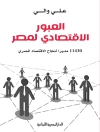The easy way to get a grip on cost accounting
Critical in supporting strategic business decisions and
improving profitability, cost accounting is arguably one of the
most important functions in the accounting field. For business
students, cost accounting is a required course for those seeking an
accounting degree and is a popular elective among other business
majors.
Cost Accounting For Dummies tracks to a typical cost
accounting course and provides in-depth explanations and reviews of
the essential concepts you’ll encounter in your studies: how to
define costs as direct materials, direct labor, fixed overhead,
variable overhead, or period costs; how to use allocation
methodology to assign costs to products and services; how to
evaluate the need for capital expenditures; how to design a budget
model that forecast changes in costs based on expected activity
levels; and much more.
* Tracks to a typical cost accounting course
* Includes practical, real-world examples
* Walks you though homework problems with detailed,
easy-to-understand answers
If you’re currently enrolled in a cost accounting course, this
hands-on, friendly guide gives you everything you need to master
this critical aspect of accounting.
Tabella dei contenuti
Introduction 1
Part I: Understanding the Fundamentals of Costs
7
Chapter 1: So You Want to Know about Cost Accounting 9
Chapter 2: Brushing Up on Cost Accounting Basics 19
Chapter 3: Using Cost-Volume-Profi t Analysis to Plan Your
Business Results 31
Chapter 4: Estimating Costs with Job Costing 47
Chapter 5: More Activity, More Cost: Activity-Based Costing
65
Part II: Planning and Control 81
Chapter 6: What’s the Plan, Stan? Budgeting for a Better
Bottom Line 83
Chapter 7: Constant Change: Variance Analysis 103
Chapter 8: Focusing on Overhead Costs125
Chapter 9: What’s on the Shelf? Inventory Costing 139
Part III: Making Decisions 159
Chapter 10: Cost Drivers and Cost Estimation Methods 161
Chapter 11: Making Smart Business Decisions with Relevant
Information 173
Chapter 12: Making Smart Pricing Decisions: Figuring Total Costs
193
Part IV: Allocating Costs and Resources 211
Chapter 13: Analysis Methods to Improve Profitability 213
Chapter 14: Behind the Scenes: Accounting for Support Costs and
Common Costs 231
Chapter 15: Joint Costs, Separable Costs, and Using Up the
Leftovers 255
Chapter 16: Tracing Similar Products with Process Costing
271
Part V: Considering Quality Issues 293
Chapter 17: What a Waste! Getting the Most from Spoilage, Scrap,
and Reworked Products 295
Chapter 18: Making Smart Ordering Decisions 317
Chapter 19: Quality: Building a Better Mousetrap 337
Part VI: The Part of Tens 355
Chapter 20: Ten Common Costing Mistakes and How to Avoid Them
357
Chapter 21: Ten Ways to Increase Profits Using Costing 363
Index 367
Circa l’autore
Ken Boyd is a former CPA with over 27 years of experience in accounting, education, and financial services. Ken is the owner of St. Louis Test Preparation (www.stltest.net). He provides online tutoring in accounting and finance to both undergraduate and graduate students.











